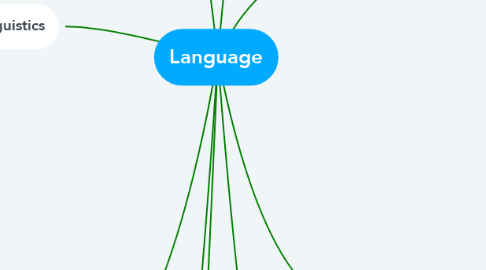
1. Phonology
1.1. Articulators
1.1.1. passive
1.1.2. active
1.1.3. Consonants
1.1.3.1. place of articulation
1.1.3.2. voicing
1.1.3.2.1. vibrate
1.1.3.2.2. non-vibrate
1.1.3.3. manner of articulation
1.1.3.3.1. stops
1.1.3.3.2. nasal stop
1.1.3.3.3. fricatives
1.1.3.3.4. affricates
1.1.3.3.5. liquids and glides
1.1.4. Vowels
1.1.4.1. high,mid,low
1.1.4.2. frontal, central, back
1.1.4.3. tense, lax
1.1.4.4. Dipthongs
1.2. Phonemes
1.2.1. 44
1.3. Phonological Processing Skills
1.3.1. Receptive
1.3.2. Productive
1.4. Importance
1.4.1. reading
1.4.1.1. dyslexia
2. Linguistics
2.1. grammar
2.2. prosody
2.2.1. syllables
2.2.2. onset & rimes
2.2.2.1. every word has a rime
2.2.3. intonation
2.2.3.1. rising
2.2.3.2. falling
2.2.4. stress
2.2.4.1. syllable
2.2.4.2. sentence
3. Morphology
3.1. Morpheme
3.1.1. affixes
3.1.2. Free Morpheme
3.1.2.1. closed class
3.1.2.1.1. function words
3.1.2.2. open class
3.1.2.2.1. content words
3.1.3. Bound Morphemes
3.1.4. Inflectional
3.1.5. Derivational
3.1.6. Making Words
3.1.6.1. compounding
3.1.6.2. prefixing
3.1.6.3. suffixing
3.1.6.4. functional shift
3.1.6.5. Shortening
3.1.6.5.1. blending
3.1.6.5.2. clipping
3.1.6.5.3. acronymy
3.1.6.5.4. alphabetism
4. Vocabulary Development
4.1. Strategies for Presenting New Vocab
4.1.1. provide kid friendly definitions
4.1.2. provide relatable examples
4.1.3. have child give examples
4.1.4. find new examples everyday
4.2. how many words?
4.2.1. 200,000 word families
4.2.2. high/low frequency words
4.2.2.1. GSL
4.2.2.2. The Dolch List
4.2.2.3. UWL & AWL
4.3. at 30 months kids know about 575 and it grows exponentially from there
4.4. Knowing Words
4.4.1. polysemy
4.4.2. denotation
4.4.3. conotation
4.4.4. spelling/punctuation
4.4.5. usage/frequency
4.4.6. parts of speech
4.4.7. word parts
4.4.7.1. affixes
4.4.7.2. roots
5. Pragmatics
5.1. sociolinguistics
5.1.1. situational context
5.2. sociolinguistic knowledge
5.3. figurative language
5.3.1. euphemism
5.3.2. metaphor
5.3.3. similies
5.3.4. irony
5.4. teaching strategies to help understand pragmatics
5.4.1. role play
5.4.2. ask, analyze, discuss
5.4.3. encourage interaction
5.4.4. read alouds
5.4.5. treat children as conversationalists
6. Literacy
6.1. Displacement
6.2. Productivity
6.3. Discreteness
6.4. Phonemic Awareness
6.4.1. grapheme
6.4.2. phonemes
6.4.3. digraph
6.4.4. consonant blend
6.4.5. dipthong
6.4.6. schwa
6.4.7. Increase Phonemic Awareness
6.4.7.1. Consonant Phonemic Awareness
6.4.7.2. Vowels Phonemic Awareness
6.4.7.3. Minimal Pairs
6.4.7.4. Phonemic Blending
6.4.7.5. Phonemic Segmenting
6.4.7.6. Rhyming
7. Language Acquisition
7.1. Noman Chomsky
7.1.1. universal grammar
7.1.1.1. nativist theory
7.1.1.1.1. VS. Functionalist Theory
7.2. The Brain
7.2.1. Right Hemisphere
7.2.1.1. left side of body
7.2.2. Left Hemisphere
7.2.2.1. right side of body
7.2.2.2. language processing
7.2.3. Aphasia
7.3. Parentese
7.4. Immitation VS Instinct
7.5. Four Stages of Lang. Production
7.5.1. 1) Make Sounds
7.5.1.1. 2) One Word
7.5.1.1.1. 3) Two Word
8. Orthography
8.1. Confusing
8.1.1. 1,100 ways to spell 44 sounds
8.1.2. english is a mix of languages
8.1.3. some old english spellings still used
8.2. 6 Written Syllable Patterns
8.2.1. Open syllable
8.2.2. closed syllable
8.2.3. vowel team
8.2.4. Vowel-Le Syllable
8.2.5. Consonant-Le Syllable
8.3. Helpful Rules
8.3.1. I before E
8.3.2. drop the E
8.3.3. doubling final consonant
9. Semantics
9.1. Compositional Semantics
9.1.1. phrasal verbs
9.1.2. entailment
9.1.3. ambiguity
9.1.3.1. lexical
9.1.3.2. structural
9.1.4. phrasal semantics
9.1.5. truth conditions
9.1.5.1. tautalogies
9.1.5.2. contradictions
9.1.6. idiomatic language
9.1.6.1. idioms
9.2. syntax
9.3. lexical semantics
9.3.1. synonyms
9.3.2. hyponym
9.3.3. antonym
9.3.4. components of its definition
9.3.5. lexical field
9.4. support to develop semantic knowledge
9.4.1. semantic maps
9.4.2. analogies games
9.4.3. word card activities
9.4.4. comparative questioning
9.4.5. semantic gradient charts
9.4.6. synonym/antonym matching

